13 Best Things to do in Norfolk: An Itinerary for a Long Weekend
We are relative newcomers to family holidays in Norfolk.
Although friends have (for years) regularly declared that there is no place like Norfolk, that Norfolk is the most beautiful part of the UK, we completely ignored their glowing reviews.
Instead, the closest we got to Norfolk was a brief trip to Norwich in 2018 – a quick city break that snubbed the wider area.
However, and with travel looking a little different once we had children, we decided to bite the bullet – booking a family holiday to Norfolk in 2022.
It was (genuinely) life changing.
Norfolk immediately cast its spell and since that first trip, we’ve already been back six times – staying in luxury lodges, hotels and holiday cottages. It’s an area we can’t imagine tiring of; a place filled with mesmerising skies, dynamic landscapes and watercolour scenes.
It’s a place of complete, undiluted, calm.
Given our new obsession with Norfolk, below is our Norfolk itinerary. This includes the best places to visit in Norfolk, the most beautiful places in Norfolk and the best things to do in Norfolk for families.
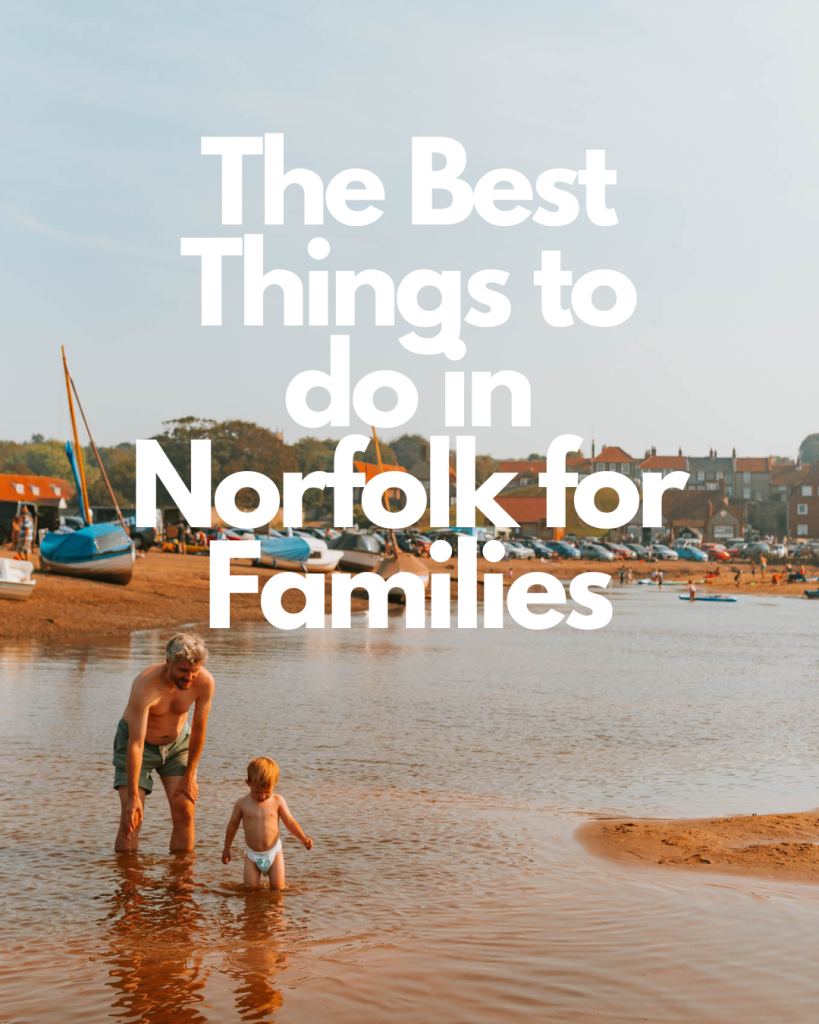
Norfolk Broads
1. Horsey Gap (Beach) to See the Seals
When it comes to best things to do in Norfolk, visiting the wild seals at Horsey Beach was something I was most excited for. Despite travelling extensively, I’ve never seen wild seals up close.
The irony that all along they’d been lying on a beach in nearby Norfolk, was not lost on me.
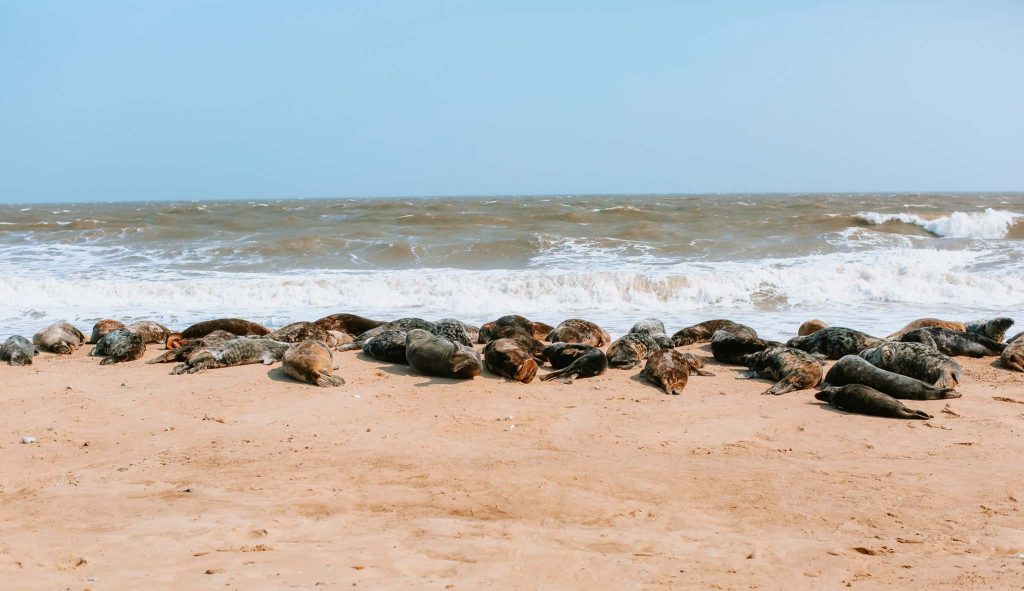
When we visited Horsey Gap, there were over 100 seals lying just meters in front of me. Although I’d hoped to see a few seals, I hadn’t expected to see quite as many as there were.
I’m not sure if this was pure luck, or if there were usually this number, but it was an incredible sight nonetheless.
When is Best to Visit Horsey Gap to See the Seals?
For those wanting to ensure that they catch sight of Horsey’s grey seal colony, be sure to visit during the winter months – late October to February. This is when the seals come ashore to mate and birth their young. In fact, between 2019 to 2020, a whopping 2069 seals were born on Horsey beach.
The beach is ideal for a sunny morning stroll, stopping to wave at the seals or to watch the crashing sea. The beach is flanked by miles of bronzed sand dunes, which add a rugged and remote feel to this lovely, quiet spot.
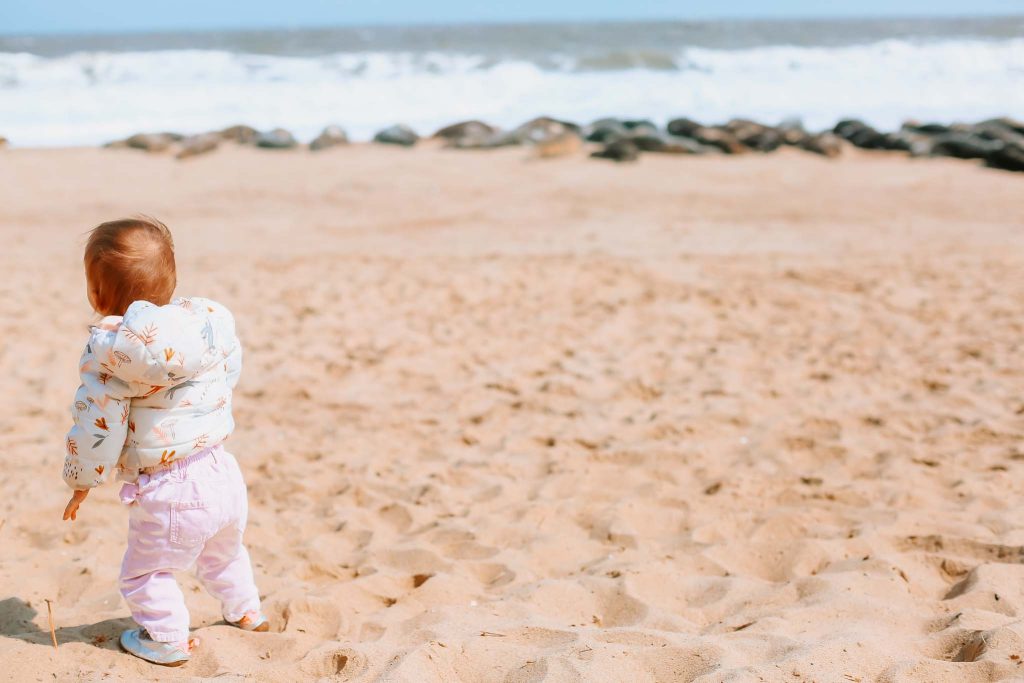
Can You Park at Horsey Gap?
Yes, there is a pay and display car park located at Horsey Gap, which allows you to walk onto the beach in a matter of minutes. However, please be warned that the walk up is quite steep and those with mobility issues might struggle to get on the beach.
2. Lunch at Poppylands, Horsey
A stone’s throw from Horsey Gap is the delightfully quirky Poppylands tearoom.
This is a great little addition to your Norfolk itinerary.
A 1940s inspired affair, Poppylands is part museum, part tearoom and part restaurant. This little spot is jam-packed with wartime memorabilia and a lovely place to enjoy some lunch.
Offering a diverse range of food and delicious cakes (and plenty of options for children), we really enjoyed our visit here. Be sure to order a pot of their tea, which comes complete with quirky teapot warmers.
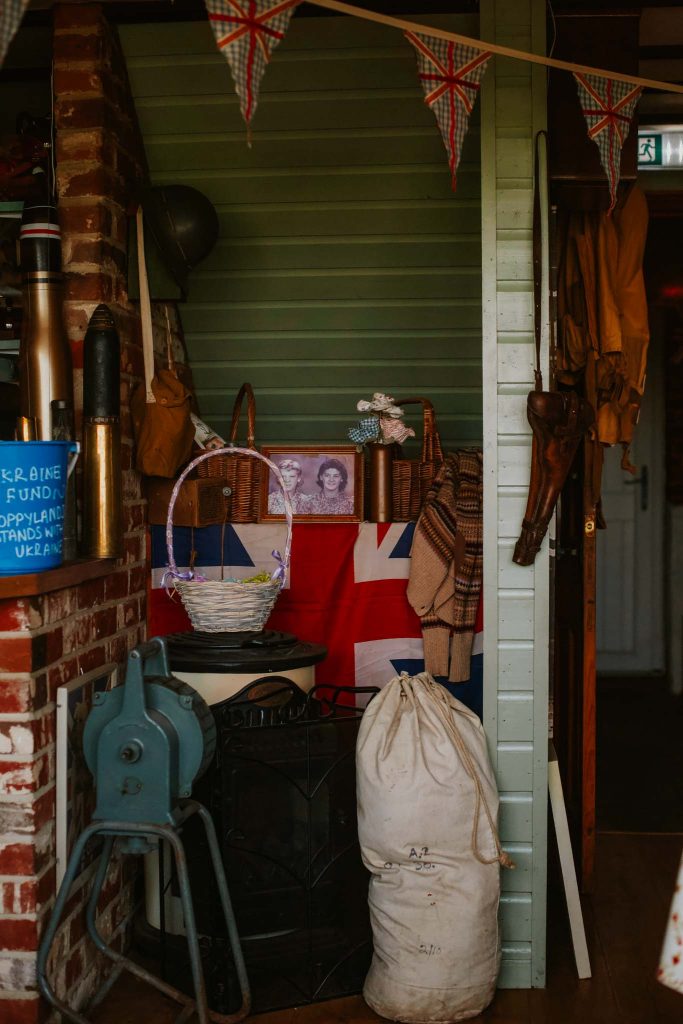
3. Visit Horsey Wind Pump (National Trust)
One of the most beautiful places in Norfolk is definitely Horsey Windpump.
On our first family holiday to Norfolk, we were staying in Horsey and so the Windpump was less than a five minute drive away. We felt very lucky to have this beautiful National Trust site on our doorstep.
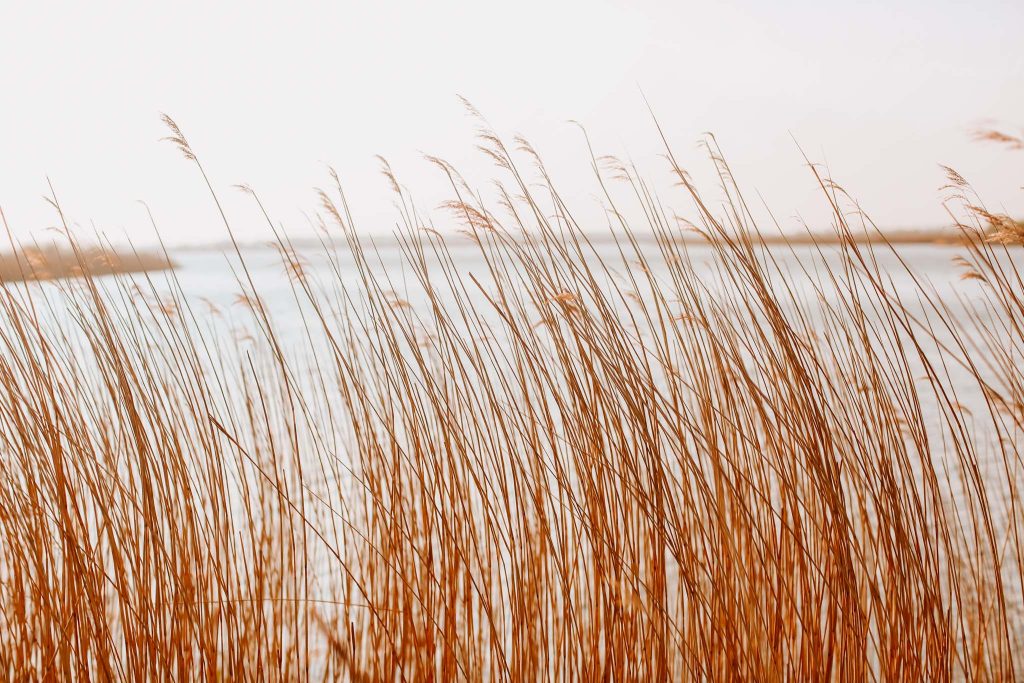
Horsey Windpump is an iconic building set on the Horsey estate, overlooking the beautiful Mere. Brought back to life in 2015, after standing empty since 1943 when it was struck by lightening, visitors can now tour this picturesque building; walking up its narrow steps for panoramic views across the Broads below.
There is also a lovely tearoom here, ideal for a cup of tea and slice of cake after a walk around the estate.
There are lots of clearly signposted trails around the area and for those looking for more adventure, you can also take Ross’ Wildlife Boat Trip from the Mere. Unfortunately, we ran out of time to do this, but are definitely keen to return to explore the area’s wildlife (children of all ages are welcome on the boat).
This National Trust site also has a small, but perfectly formed, Sensory Garden, which my daughter really enjoyed exploring.
This is a fanatic place to add to the list when considering things to do in Norfolk with children and somewhere to definitely include on your Norfolk itinerary.
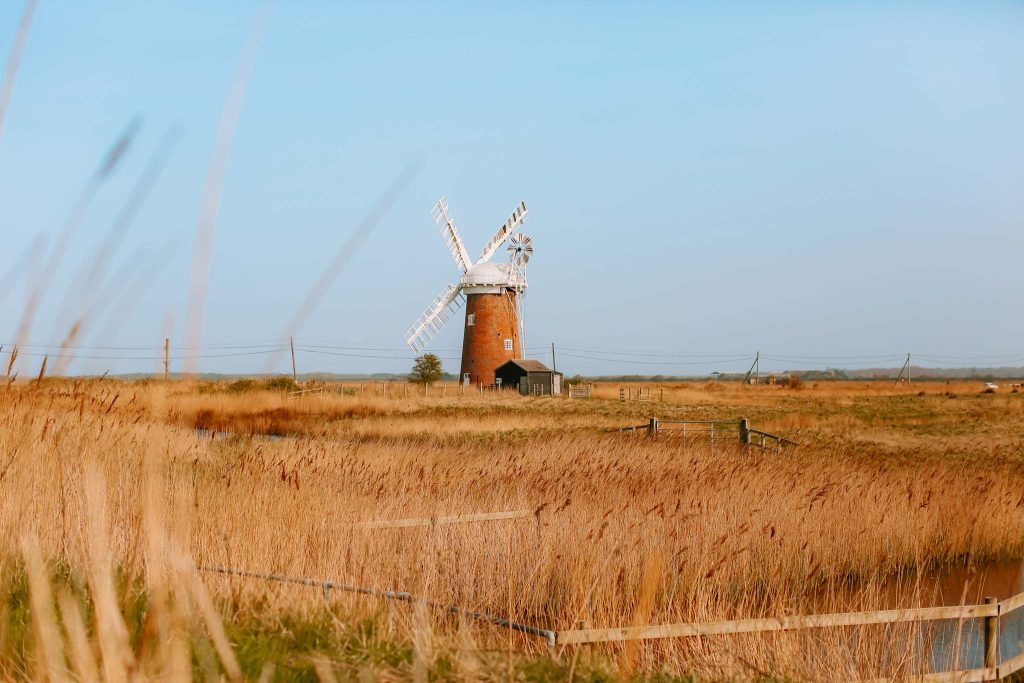
4. Happisburgh Lighthouse
A trip to Happisburgh Lighthouse is definitely one of the best things to do in Norfolk.
Having explored Horsey, why not travel twenty minutes up the road to Happisburgh Lighthouse (pronounced ‘hayz-buh-ruh’). The oldest working lighthouse in East Anglia, built in 1790, Happisburgh is a red and white striped beauty to visit.
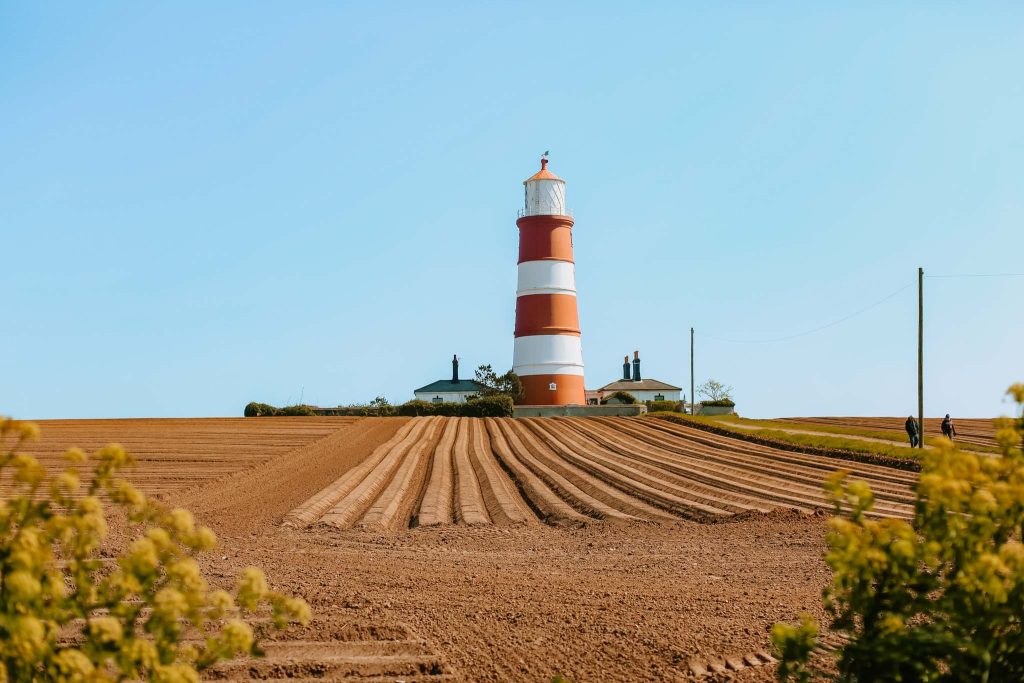
Although you can only visit the inside of the Lighthouse on certain days of the year (more information on open days here), the walk around the building is still well worth it. We visited on a bright, sunny April morning, when the smell of the salty coast was fresh in the air.
Much to my daughter’s delight, there was an excellent park next to the Lighthouse, which she really enjoyed before we went on a walk down to the coastline. There is also an excellent 1.75 mile walking trail around the Lighthouse, which will take you down to the coast and back round in a loop.
A trip here is definitely worth adding to your Norfolk itinerary.
Parking at Happisburgh Lighthouse: there is a pay and display carpark next to the Lighthouse, which also provides easy access down to the coastal path.
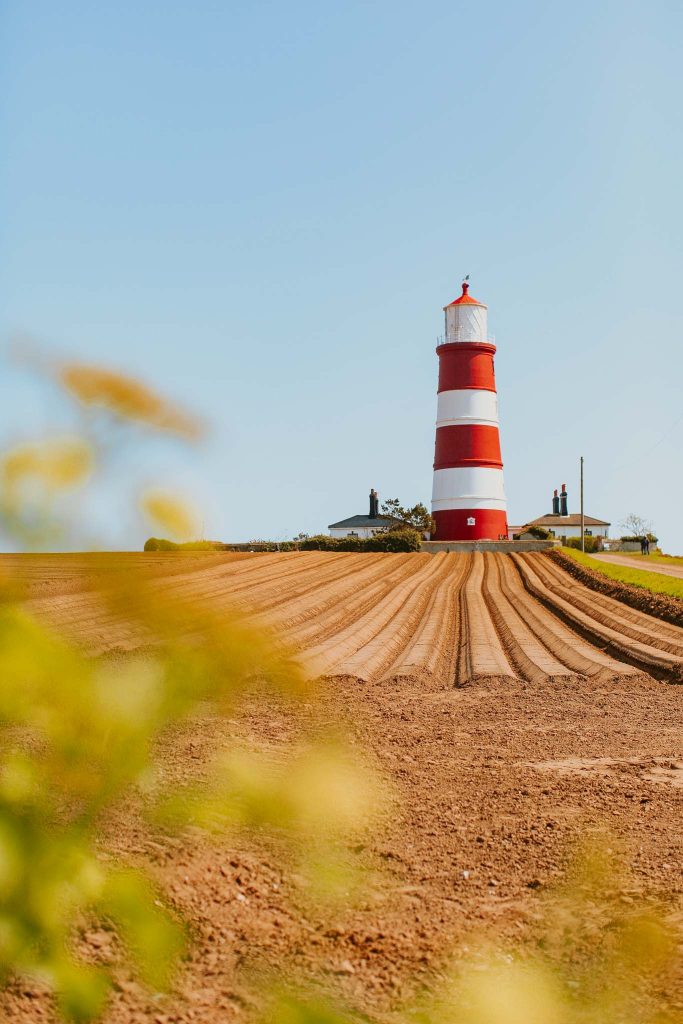
5. East Ruston Vicarage Gardens
The East Ruston Vicarage Gardens were perhaps the unexpected highlight of our long weekend in Norfolk and should definitely be added to your list of best things to do in Norfolk.
Privately owned by Graham and Alan, who bought the property in 1973, the gardens have been a labour of love. Initially a barren piece of land, the gardens are now 32 pristine acres, including woodland, Mediterranean, winter and glasshouse gardens.
Here you’ll also find meadows, walled gardens and more formal walkways.
They are, in short, a nature lover’s paradise and my daughter was in her element exploring the gardens on a warm, sunny afternoon.
Visit the Tea Rooms
As East Ruston was just a five minute drive from Happisburgh, we decided to have lunch at the tearooms onsite. On a sunny day, sitting in the gardens for lunch was lovely – although I did feel that the lunch was very overpriced.
I’d instead suggest bringing a picnic with you and buying a cup of tea and slice of cake when you visit, to save some pennies.
We spent far longer in the gardens than expected, exploring the different designs and soaking up the sunshine. The Vicarage’s pets can also be found roaming the estate and my daughter adored stroking the friendly dogs and resident cat.
The gardens also boast a lovely plant shop, where I bought a boot full of colourful, bee friendly plants for my own garden.
It was a blissfully happy afternoon and I cannot recommend a trip to East Ruston Vicarage Gardens enough when its comes to your Norfolk itinerary.
6. Felbrigg Hall (National Trust)
Definitely one of the prettiest places in Norfolk is this National Trust site – Felbrigg Hall, Gardens and Estate. While parts of the hall, dating back to the 1620s, are open to the public, we decided to stick to just the gardens – thanks to our toddler tyrant in tow.
Even just a stroll around the garden, however, was well worth the visit.
The Gardens at Felbrigg are ideal for children to explore and include an octagonal dovecote (a home for doves). We were fortunate enough to visit when the resident doves were being fed – and my daughter had a very excitable 10 minutes pointing, shrieking and, at times, attempting to pick up, these very patient birds.
The walled gardens of Felbrigg are a magical spot to visit on a warm afternoon and were the ideal place to end our first long weekend to Norfolk.
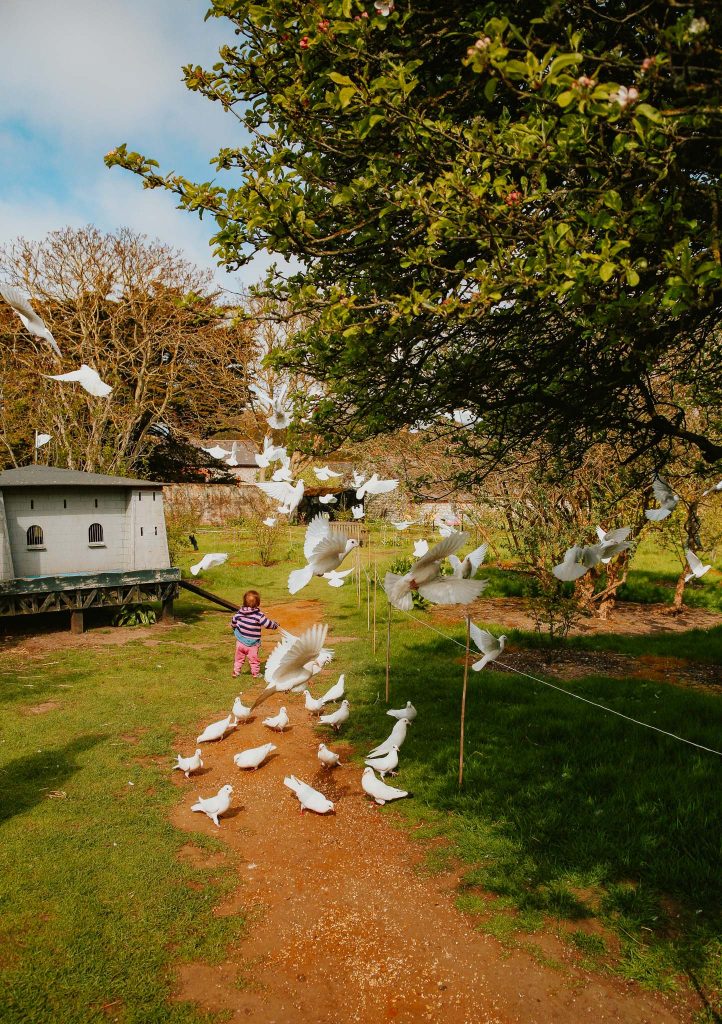
North Norfolk
7. Visit Sandringham
No Norfolk itinerary would be a trip without royal Sandringham.
Not just a royal palace (King Charles’ favourite, in fact), Sandringham is a fantastic place to visit with kids thanks to its phenomenal woodland park, trails and cafe.
It also has an amazing shop, which I visited not once, but twice.
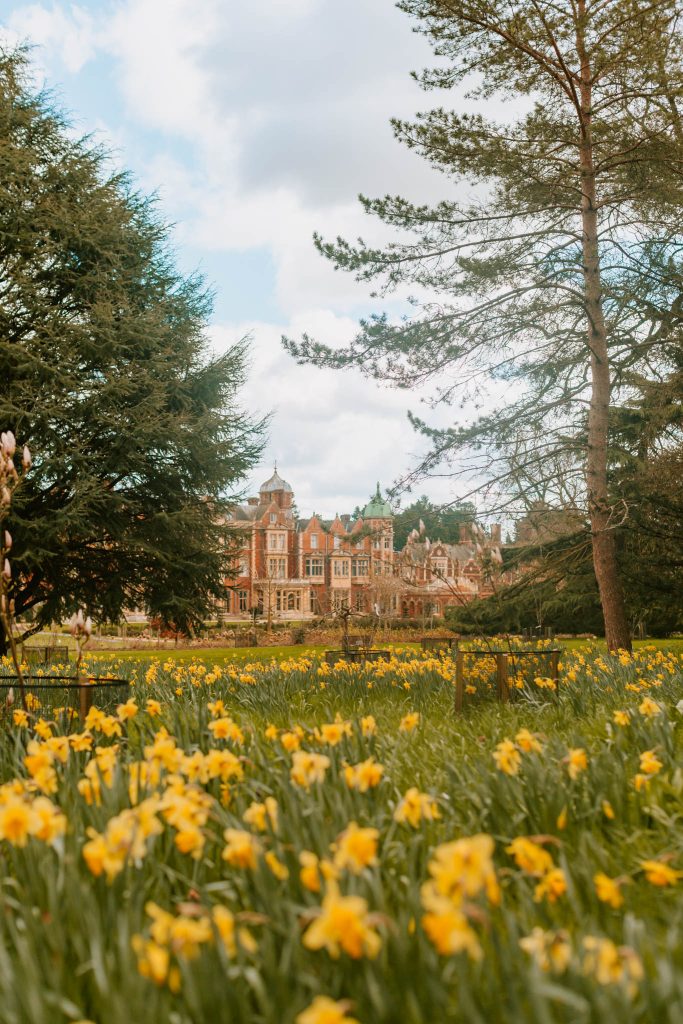
These attractions aside, you can also buy tickets to visit both the Palace Gardens and the House (you’re able to wander a small portion of it) and all visitors can visit the famous Sandringham Church for free (where you’ll see the royals visiting on Christmas Day).
Tickets are fairly reasonable. Garden only tickets are £14 for an adult and children under 17 go free – which is a great deal. However, I honestly think you could avoid paying altogether (aside from car parking), and just enjoy the free onsite facilities, including the park and the woodland walks.
Although we did pay for the garden tickets, as it was still winter (March) there really wasn’t a great deal to see and our toddler wanted to leave within five minutes.
It was pretty sparse and dull.
With retrospect, we should have just paid for parking (pay online for the day, for £5 – it’ll be more expensive to pay at the machine on the day) and made the most of all the free activities there.
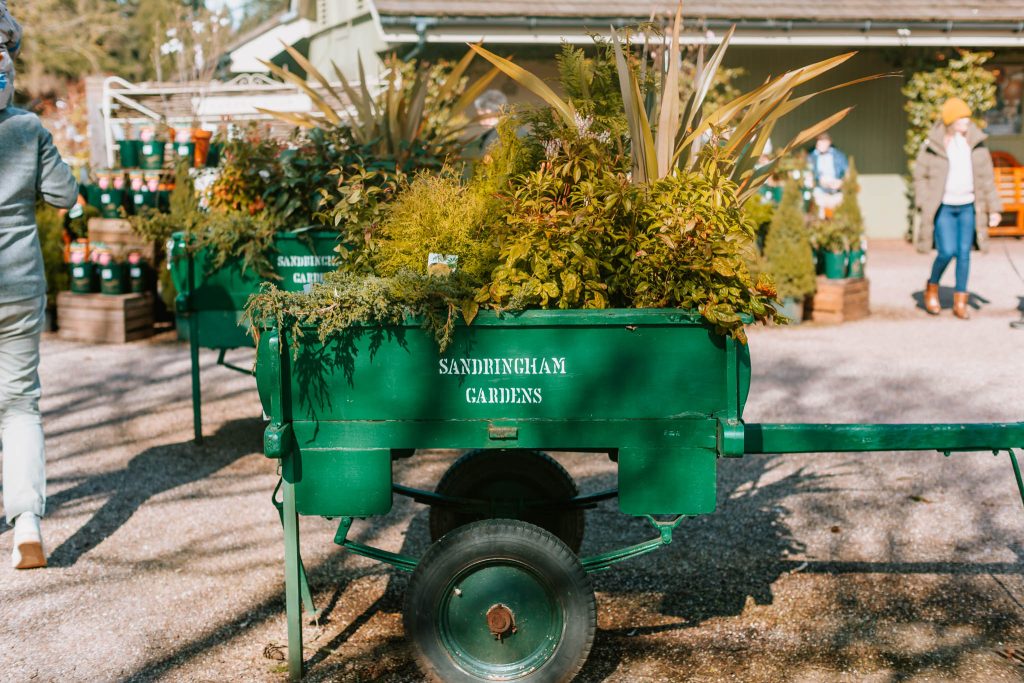
This said, we really loved our trip to Sandringham. We were there for five hours and had a brilliant time – and is, I think, (surprisingly) one of the better things to do with kids in Norfolk.
If we had planned ahead, we would have opted for some of their (more expensive) activities perhaps – including their Land Rover Safari Tours.
8. Head to Pensthorpe (Great for Kids)
Another for the list of best things to do with children in Norfolk is a trip to the fantastic Pensthorpe.
Voted one of the best family days out in Norfolk, Pensthorpe was founded by conservationist Bill Makins – who, after moving over one million tonnes of gravel from the site, established a 200-acre nature reserve. Since then, its new owners have continued to grow this beautiful park, creating a 700 acre haven for wildlife and birds.
Visitors flock here (if you’ll pardon the pun) to walk its beautiful wetlands and lakes – bird spotting along the way. A Glade Sculpture Garden, Aviary, Millennium Garden and Hide also fill the site, alongside a lovely courtyard cafe and numerous trails.
However, the real hit with our family was the fantastic Hootz House – a magical indoor play area for children and Wild Root – an outdoor playground feating 30ft towers, zip wires and giant slides.
Our toddler absolutely loved it here. We booked the 10am slot for Hootz House (10 – 11.15am) on a Sunday morning, and had the place to ourselves for the first 20 minutes. It was one of the best indoor play areas we’ve visited and was based on a tree house – with lots of climbing opportunities included.
The outdoor play area is equally as impressive and paired with the many ducks that wandered over (you can buy duck food for £2.50 at the counter), it was a toddler-heaven.
We had such a lovely morning at Pensthorpe and really enjoyed the kid’s ‘Poo Trail’, which again, was a huge hit with my son.
When it comes to best things to do with children in Norfolk, a visit to Pensthorpe is definitely one.
Make sure you add it to your Norfolk itinerary.
9. Enjoy Burgers at Fat Cow
During our trip to Norfolk last summer, we made the memorable trip to a farmer’s field – in order to try the legendary Fat Cow burgers.
Just as evening was settling over North Norfolk – swallows diving overhead – we arrived at the field (close to Fakenham), to find a burger van, fairy lights and music.
The place was filled, with kids climbing hay bales and adults enjoying a beer – as delicious looking burgers and fries decorated the picnic tables.
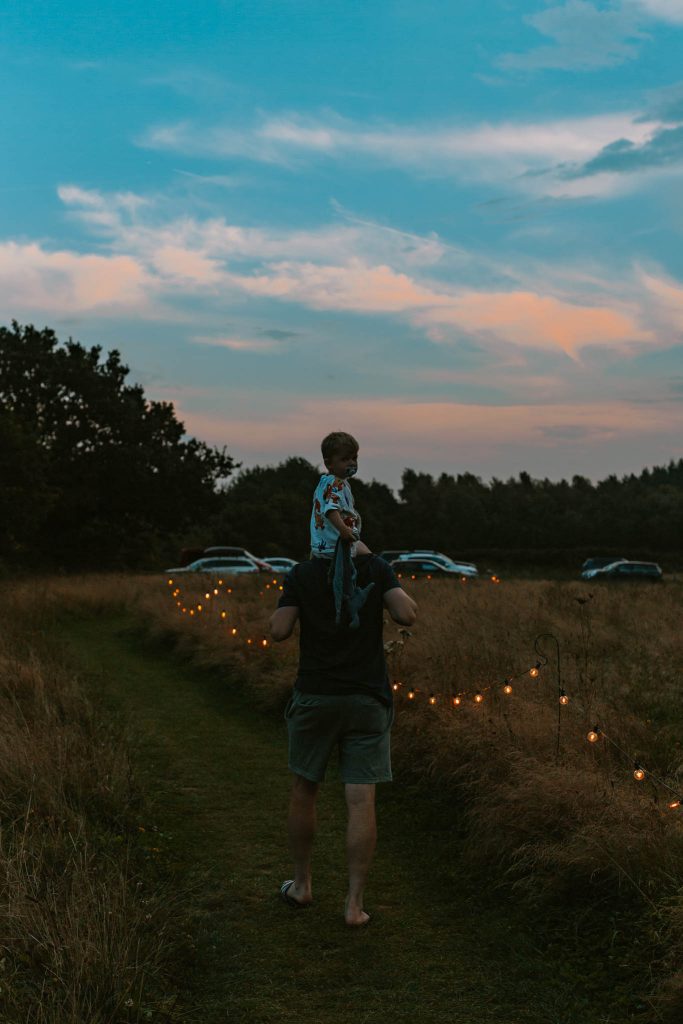
It was so unexpected, but completely brilliant – and we had the best night here, enjoying some of the best burgers we’ve had in the UK. They also offer soft serve ice cream here, which our son loved – alongside an old, stationary tractor and games, that the children were taking full advantage of.
Come the summer months, this is a really special spot and the food is fantastic. It’s definitely a place to add to your Norfolk itinerary.
Fat Cow is only open in peak season from June – September, so be sure to visit if you’re visiting Norfolk during this time.
10. Burnham Overy Staithe
Small and secluded, the creek found in the little village of Burnham Overy Staithe is easily one of the most beautiful spots in Norfolk – especially at dusk.
After a slap up meal at The Hero (our favourite place to eat in North Norfolk), walk down the lane to the creek – where boats are coming in for the evening, dogs are splashing and North Norfolk’s famous big skies stretch out ahead of you.
The sky – a blended pastel painting – is stunning at this time and it’s a lovely spot to sit and watch the birds begin to roost.
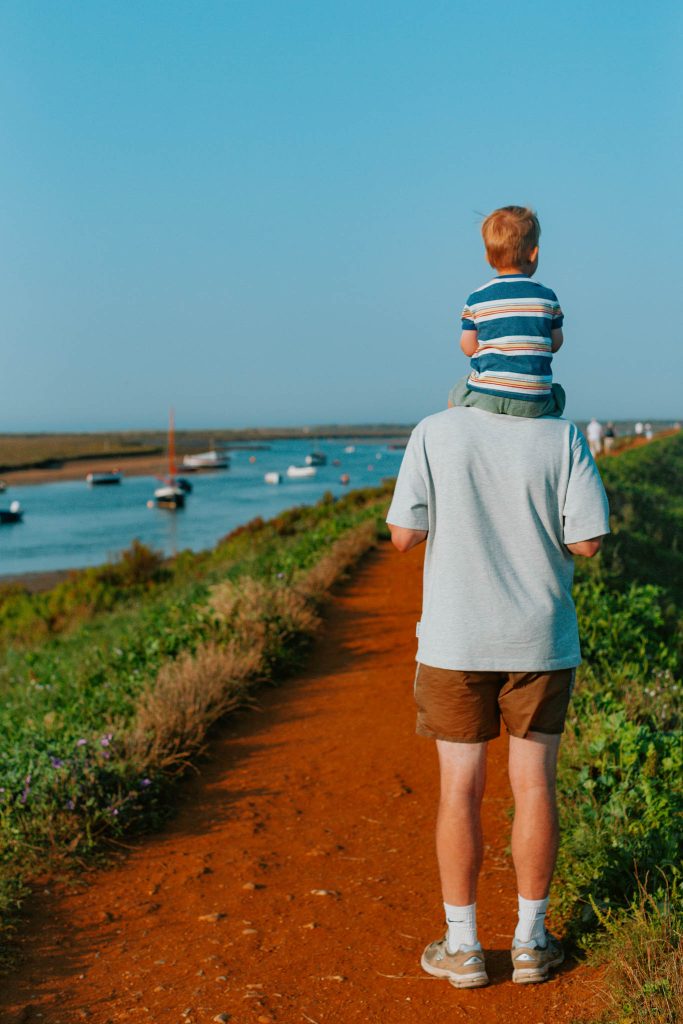
From Burnham Overy Staithe you can also take some stunning walks – including to the beach. One popular circular trail takes you to Holkham’s nature reserve, walking along Norfolk Coast Path as you go.
From the village you can also walk to the six storey Burnham Overy Windmill (that you can even rent as a holiday home).
Bring your walking boots, a bottle of water and enjoy meandering through the estuary – bird spotting as you go.
11. Holkham Hall (and Beach)
One of the best places to visit in North Norfolk – and a place to add to your Norfolk itinerary – is the beautiful Holkham Hall.
Like many of Norfolk’s grand houses, there is more to do at Holkham Hall than visit a stale, stately home. Instead, this is an entire-day sort of destination: a place that offers something for all ages and, most importantly, it will keep your kids occupied too.
The house is surrounded by beautiful walled gardens, deer parks, a nature reserve, the best beach in North Norfolk and (here we go again) – a great park for kids.
During our own visit to Holkham Hall, we hired bikes (complete with a trailer for our son) and cycled the estate, before heading through the nature reserve and down to Holkham’s famous and utterly beautiful beach.
Adults can hire a bike for two hours for £14 and children’s trailer costs £20 (a child’s seat is cheaper at £12).
The estate itself is free to visit, aside from parking. However, if you want to visit the Hall, the Walled Garden or the Ropes Course, you’ll have to buy tickets separately.
We decided not to buy tickets for the Hall or Garden and are really glad we didn’t. There was so much to do outside of these attractions and once we’d been to the park, stopped for a slice of cake, enjoyed a bike ride and explored the nature reserve, the afternoon had already flown by.
I honestly think you could get away with just paying for parking and enjoy the estate for free.
Parking is £5, but redeemable in the shop on purchases over £30. If you want to visit just Holkham Beach, then the parking is down the road and costs £6.50 for four hours.
12. Crabbing at Blakeney
Blakeney is often touted as the poster child for North Norfolk.
A winding, crooked town, surrounded by an area of outstanding beauty and flint cottages, Blakeney has some great pubs, cafes, (many) art galleries and a nature reserve to explore.
From my toddler’s perspective, a visit here is definitely one of the best things to do in Norfolk – especially with children.
We visited on a warm September afternoon, equipped with a fishing net, crabbing bucket and net. Blakeney is surrounded by an estuary, and as the tide goes out a maze of creeks and mud banks are revealed – perfect for paddling and looking for ‘treasures’.
We popped to the fantastic Two Magpies Bakery, just on the banks of the estuary, and then drank coffee and ate cake as our son explored the little pools. It was a perfect afternoon and our son absolutely loved it (and therefore had a tantrum when we had to leave).
If you fancy a longer walk from Blakeney, walk to the famous Blakeney Point, where the UK’s largest colony of Grey Seals live (note that they are only there in the winter months, during which time up to 4,000 seal pups are born). The beach is shingle and surrounded by beautiful dunes and vast marshes, where you’ll spot plenty of migrating and native birds.
Alternatively, park at Cley Beach (part of the Norfolk Wildlife Trust car park) and take the 4 mile walk up the shingle split.
13. Wells-Next-the-Sea
Finally – browse any Norfolk itinerary and a stop at the beautiful Wells-next-the-Sea will almost certainly be on the list.
Can You Rent Beach Huts at Wells-next-the-Sea?
The beach at Wells is famous for its array of mismatched, colourful beach huts that line its sandy stretch of coastline. Many of the beach huts at Wells-next-the-Sea can be hired for the day, with The Happy Huts recommended to me as one of the best providers.
These cost £60 a day during peak season and £55 a day during off peak times.
Quirky and bursting with colour – and boasting names such as ‘Dolly Mixture’ and ‘Linger Longer’ – the beach huts looked like the ideal base for a day by the sea and I would certainly recommend hiring one when visiting the beach (especially during the summer).
The beach at Wells-next-the-Sea is also flanked by a pinewood forest. Planted over 100 years ago, these Corsican pines are lovely to wander and we had a beautiful walk through them, spotting squirrels and birds as we went.
For those really looking to stretch their legs, you can walk the few miles along the beach to the Holkham Estate, who actually own the beach at Wells.
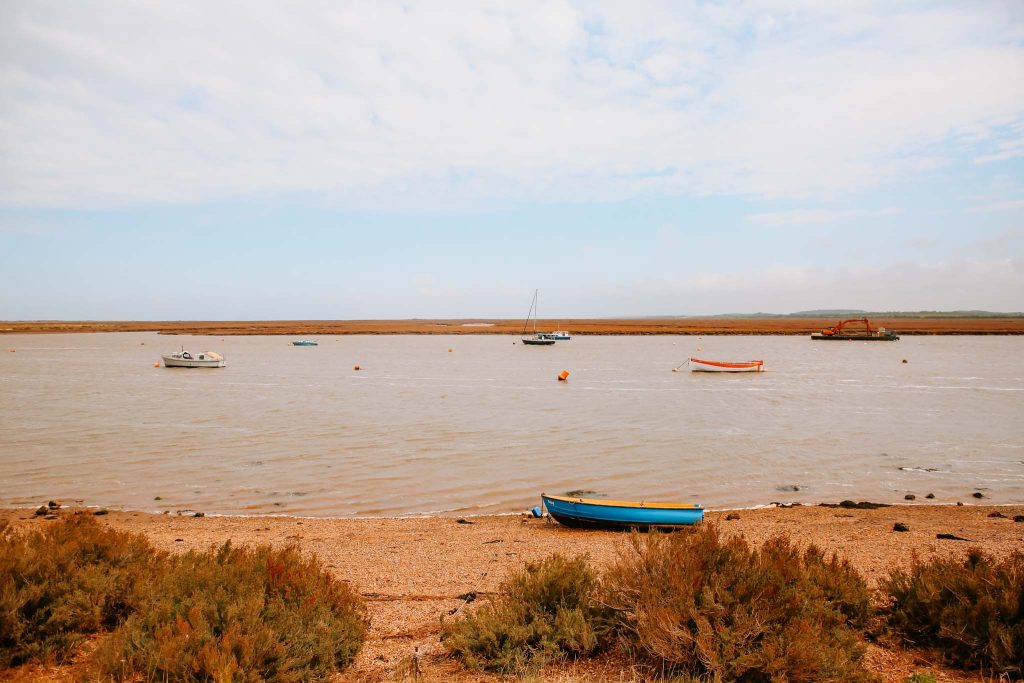
Beach aside, Wells Quay (port) is also a lovely spot to enjoy the afternoon sun. We demolished some fish and chips here (whilst avoiding the seagulls).
For those looking to enjoy the British seaside pastime of crabbing, you can also do this at the Quay at Wells. Re-usable metal buckets and eco-friendly tackle can be bought at Gilly’s Hut and can be hired for just £1.00 (with a £5 deposit).
In terms of things to do with children in Norfolk, crabbing at Wells is definitely one.
Parking at Wells-next-the-Sea
There is ample parking at Wells-next-the-Sea, including both in the centre of town and at the beach. We decided to park in town and enjoy the twenty-minute coastal walk over the marshes to the beach (alternatively, and during the summer months, a beach bus operates between the town and the beach, saving you the hassle of lugging your towels up there).
The carpark also came complete with a cafe, toilets and much to my delight, a Joules shop.
Parking costs:
Up to 2 hours: £3.50
Up to 4 hours: £6.50
Over 4 hours and all day: £9.00
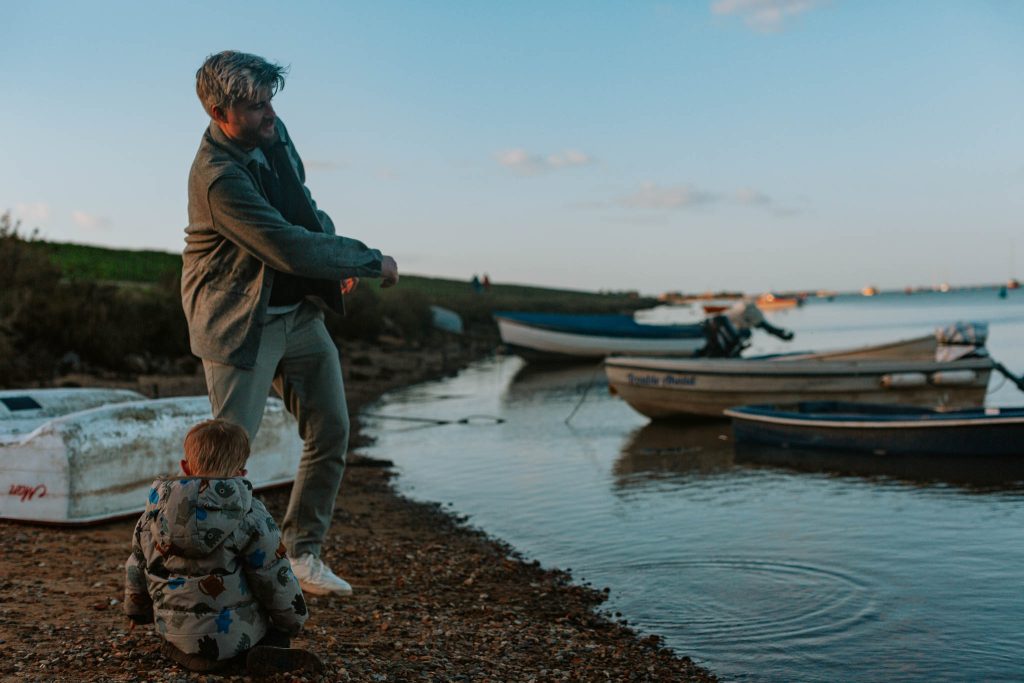

























1 comment
[…] post An Itinerary for a Long Weekend in Norfolk appeared first on Twin […]